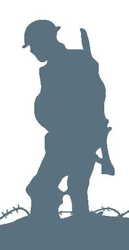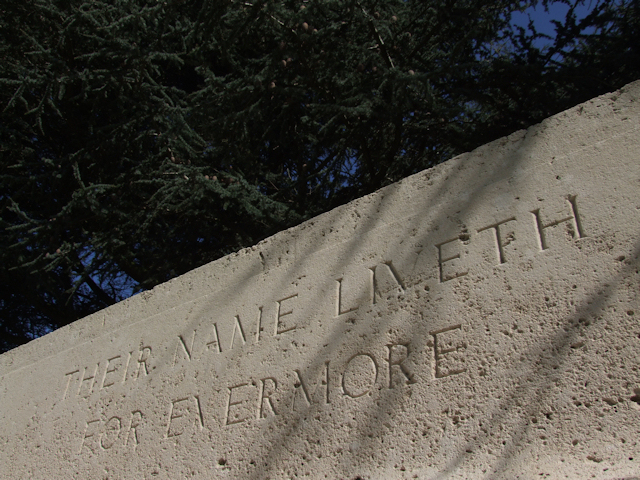Name
Frederick Charles Chapman
Conflict
First World War
Date of Death / Age
06/11/1918
Rank, Service Number & Service Details
Private
203720
East Surrey Regiment
9th Bn.
Awards: Service Medals/Honour Awards
Not Yet Researched
Cemetery/Memorial: Name/Reference/Country
CROSS ROADS CEMETERY, FONTAINE-AU-BOIS
II. C. 7.
France
Headstone Inscription
Not Researched
UK & Other Memorials
St Mary’s Church Memorial, Rushden,
Not on the Clothall memorial
Pre War
Born in Clothall in 1891 or 92 son of George and Linda Chapman living in Church End, Rushden in 1901 and 1911 as a horse keeper on a farm, later living in Weston, Baldock.
1901 census details. As detailed in his brother Albert’s notes, Charles F. 10, was the 3rd child and second son of George and Linda Chapman of Church End, Rushden who had 7 children living with them and one next door.
1911 census details. By this time 13 children had been born! Charles F. was 19 and was a horsekeeper on the farm.
Wartime Service
Enlisted in Weston, Herts. Entered France 5 Oct 1915. Formerly service number 8288.
His service records have partially survived but 60% of WW1. soldiers’ records were lost in WW2. bombing. His records name him as Frederick Charles Chapman. 13 Sheets of his records have survived but are very burnt round the edges and need careful scrutiny to detect the facts.
He enlisted in Weston on 11.8.1914 just days after the Great War started and because he was awarded the 14/15 Star, the War and Victory medal we know that he saw service in France between late November 1914 and December 1915 in order to earn the Star. The medical was done in Bedford and he went into the Bedfordshire Regiment but almost immediately was transferred into the 9th. Battalion East Surrey Regiment, 24th. Division, 72nd. Brigade with a service number of 203720.
(The following are identical to the notes on David Graves until Aug. 16th. 1916)
Like so many of the lads from our villages he probably looked forward to the adventure of going abroad and like most, thought the war would soon be over. By September 1914, after 1 month of war it was realised that 6 new divisions would be needed and the 24th. was the one that this young man and his friend David Graves were in, the 9th.(Service) Battalion, East Surrey Regiment. This was part of the Third New Army’s 72nd. Brigade and it assembled and trained around Shoreham.
“The 24th. Division was newly formed and had everything to learn! No battalion had more than 2 retired regular officers, including the commanding officer. At first the accommodation was poor and churches, cinemas and halls had to be used. The Division was then put under canvas, but the weather broke and the troops were then billeted until huts could be built. Arms, uniform and equipment were slow to arrive: it was March 1915 before makeshift drab clothing could be issued and service rifles only became available between May and July, before that broom handles were used!
Between 19th. and 24th. June, the Division accompanied by its Divisional artillery and engineers marched in 3 groups from the Shoreham district to the Aldershot Training Centre and the final war training then began and gun- practice was carried out. On Thursday August 19th. Field Marshall Earl Kitchener inspected the Division on Chobham Ridges and between 11am and noon on the next day H.M. the King visited the 24th Division on Chobham Common. On 21st. the Division had received orders to be ready to embark for France” (1.)
The battalion actually went over to France on September 1st. 1915 but according to the medal rolls index David’s time in France and his friend Frederick Chapman’s started on October 5th. 1915.
The War diaries of the 9th. East Surrey Regiment are available on line and although very tricky to access, with patience I have gleaned much information about what our boys were involved in.
Summary of life in the 9th. East Surrey Regiment, Oct. 1915 – Aug. 1916 when all the time enemy action made life continuously uncomfortable and indeed hazardous.
David and his friend Frederick Charles Chapman landed in France on October 5th. 1915 and joined the battalion in the Ypres area of Belgium where the camp had to be cleaned up and this took some time.
- 28th. This was the battalion bath day and clean underclothing was issued to the force.
- 31st 2 companies were despatched to the trenches which were wet and ‘fallen in’ on the departure of the previous company and because communication trenches were in such a bad state it was difficult to get rations up to the front.
- November 3rd. The enemy was very quiet even calling across and waving bottles above the parapet.
- 8th. The men had their feet greased with anti-frostbite grease. They complained it caused soreness but said at least it kept their feet warmer. (Trenchfoot was the curse of troops’ life because of the cold, wet winter conditions and this could lead to gangrene and even amputation of lower limbs)
- 19th. They were promised a much needed month’s rest behind the lines when the days were filled with training, marches, lectures, church parades and some sporting competitions. Their billets at Tournehem were said to be good!
- December 5th. The diary states that a football matches took place with A,B and D companies taking part against Headquarters! There was a 30/- prize. A boxing ring was also erected and they had a machine gun competition with the Royal West Kent Regiment.
- 25th. Christmas Day. It was a fine day and the men played football in the morning, attended church service at noon, had a “colossal feed at 1pm of chicken, fruit and plum pudding” and had a concert in the afternoon.
- Normal training continued after that until January.
- January 7th. Troops were moved to the trenches north of the Menin Road between Ypres and Hooge . Enemy activity in the next week resulted in casualties.
- 14th. They moved back to camp near Poperinghe until 31st then back to the same trenches until February 7th.
- February 7th-19th. They went to the Zillebeke Dugouts for a rest but the H.Q. was badly shelled.
- 19th Back to the Hooge trenches where sniping was a regular occurrence but on several occasions the German soldiers shouted over “Tommy” and “friend”. It was certainly not ALL aggression on the part of the ordinary ranks on both sides as no doubt they were all tired of the conditions, food and continuous discomfort!
- 24th-27th. Back to Zillebeke for rest and recovery for those who made it unscathed.
- March 1st. and 2nd. Heavy activity was suffered in the trenches with trench mortars and ‘whizbangs’ being exchanged regularly.
- 16th. Back in Zillebeke and news was heard that awards had been granted to Temp. 2nd. Lt. Gerald Spencer Tetley a Military Cross and Distinguished Conduct Medals to Privates Jewson and O’Connell. This raised morale.
- April Brought daily casualties to trench bound troops and working parties .
- May and June were also bad and there was a definite increase in enemy activity but a major plan was being made for a massive attack down in the Somme area to take the pressure off the French struggling at Verdun. Thus the 9th East Surreys were to leave the Belgium area.
- July 1st this was the first day of the dreadful infamous Battle of the Somme when so many lives were lost but our lads didn’t arrive down in the area, at Morlancourt until 24th.They were in training here behind the lines until further orders were received.
- August 9th. They were to relieve the 1/5th. North Lancs. Regiment in reserve trenches. This happened on 13th. and C and D companies went in whilst A&B were left behind in training. The reserve trenches were 1 mile S.W. of Guillemont. Then they were moved up to relieve 8th. Queen’s in the front line trenches W. and S.E. of Arrowhead Copse. (see map and war diary for 16th enclosed) ready for the attack on:
16th. August:
C and D companies advanced from Lamb and New trenches at 5.42pm. after the artillery had supposedly ‘softened’ the enemy position. At this time several of the 18lb. shells fell short of the enemy and killed/injured our own men who were waiting to ‘go over the top’.
Leading waves ‘in perfect lines’ had barely left their positions when they came under strong rifle fire from the front and machine gun fire from both flanks. The objective was a strong point consisting of a solidly built concrete dugout surrounded by a well built trench just S.W. of the village of Guillemont. As the objective was reached there was a tremendous volley of bombs. It was slaughter.
In those few brief hours our casualties were; 5 Officers killed, 2 Officers wounded, 181 of the 249 ‘Other Ranks’ killed, injured or missing.
Frederick Chapman would have known of the death of his friend David Graves and probably found it really hard to continue without him.
1917 saw more action at Vimy, Messines, Pilkem Ridge and Langemark and in early 1918 his battalion was involved in the Battle of St. Quentin. Then in the autumn, in the final push, the Advance to Victory on November 6th, Private Frederick Charles Chapman was killed just 5 days before hostilities ceased and the Armistice was declared. According to the war diary he was killed by an unlucky shell alongside 6 others and 2 were injured and subsequently died. He had gone through so much but was sacrificed at the end aged 27 years. His service records state that he was initially buried ‘in an isolated grave 150 yards in from the S.W. side of the road from Jenlain to St. Waast, 8 miles S.E. of Valenciennes, 1 and 1/4 miles S.E. of Wargnies-le-Grand but was exhumed later and re-interred at Cross Roads Cemetery, Fontaine au Bois, 4 and ½ miles N.E. of Le Cateau’.
R.I.P.
Additional Information
The Chapman family had sent 6 sons to war and Frederick was their second loss.
Acknowledgments
Malcolm Lennox, Jean Handley



